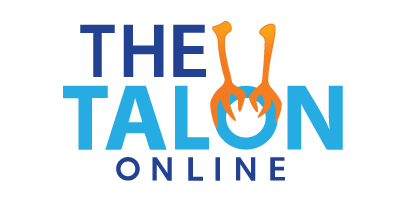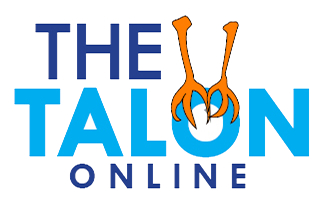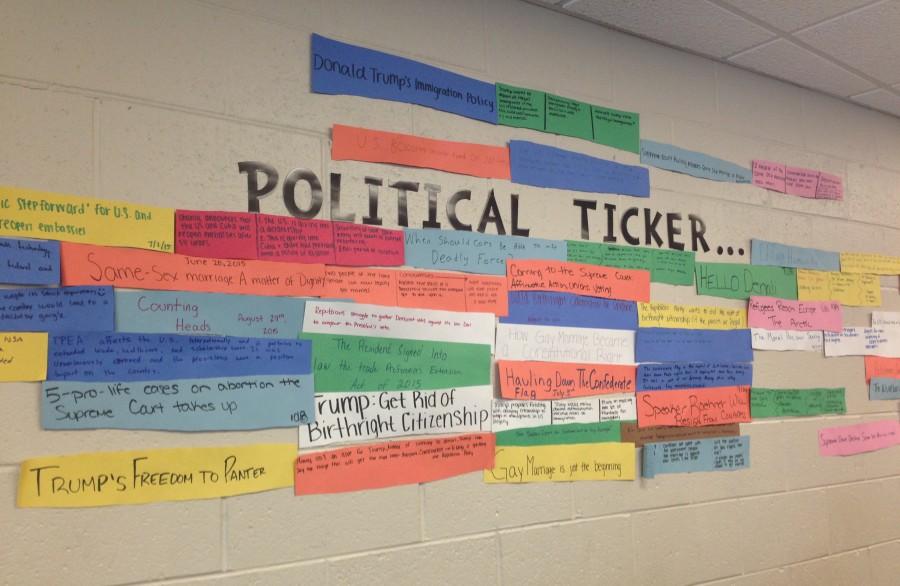RCS works to implement Cultures of Thinking in all classrooms
November 16, 2015
This year’s instructional focus revolves around Ron Ritchhart’s “Cultures of Thinking,” which involves teachers evaluating and being mindful about their use of eight forces in their classrooms, including: expectations, environment, time, language, modeling, opportunities, routines and interactions.
From Oct. 26 through Dec. 11, the building will continue to focus on expectations and environment. Then from Dec. 14 through Feb. 12, teachers will be focusing on time and opportunity. Feb. 16 through April 1 will see teachers focusing on modeling and language. Finally, the building will focus on interactions and routines from April 11 through May 27.
Assistant principal Mr. Casey Wescott explains how the district’s strategic plan helped inform the choice to focus on these forces this year at RHS.
“There was interest from the staff and interest from the administration,” Mr. Wescott said. “There was also interest from the district as well, you know, looking at this as a positive for students.”
Mr. Wescott described what exactly Cultures of Thinking is and how it would affect students’ learning.
“[With Cultures of Thinking] there’s more of a focus on learning than getting it done and looking at it from a perspective of a letter grade,” Mr. Wescott said. “The other part would be trying to take that learning and experience further and looking at it more in depth and peeling back the layers and being more collaborative and inquiry-based.”
As a social studies teacher prior to becoming an assistant principal at RHS, Mr. Wescott has had experience in the past with Cultures of Thinking, and found some similarities in both roles.
“I had experience in the classroom doing it and talking about it with my colleagues at Adams, and I’m still having those same conversations with my colleagues within [that] building and I was also able to target or seek out people that are using the routines,” Mr. Wescott said. “[With] my role as an assistant principal, I think I’m doing the same thing of trying to seek out teachers who are using visible thinking routines and seeking out how that’s used in their classrooms. It’s another way for me to gather resources and be able to talk to other people about it, and being that coach piece.”
Social studies teacher Mrs. Laura Matthews, who is a part of the leadership team in charge with getting the concept out to the rest of the staff, explains the training she underwent in order to be able to implement, as well as present different cultural forces to her colleagues.
“We did a cohort, which means we met several times throughout the school year,” Mrs. Matthews said. “And we observed each other in classrooms to see the best practices and the strategies being implemented.”
Mrs. Matthews explains her first impression on Cultures of Thinking.
“At [one] point in time, I was just not buying into the process because I felt like it simplified content too much and I was worried about AP prep, like, would you guys know your stuff?” Mrs. Matthews said. “But I continued to muddle through it and buy into it … I started to see actual results of it. The kids started to think and talk more, which promoted discussion.”
Mrs. Matthews talked about the cultural force she plans on implementing in her classroom.
“I’m doing environment and modeling,” Mrs. Matthews said. “Everyone always thinks [environment] is how you arrange your desks and is it promoting discussion and stuff and it’s far beyond that. Environment is also about displaying things that get students talking and thinking.”
Mrs. Matthews expressed some goals she has for herself in regards to Cultures of Thinking.
“My goal is to display more student work but also don’t just display it for it to be up there,” Mrs. Matthews said. “[I want to] refer back to it more when I’m teaching so you guys can see the relevance, like why you’re doing it, why it matters. It’s a reference tool and a resource for learning instead of just work.”
Science teacher Mrs. Erin Slomka also spoke out on the cultural force she plans on using.
“I chose opportunities,” Mrs. Slomka said. “[It’s about] providing activities that require students to engage in thinking and the development of understanding as a part of their ongoing experience of the classroom.”
Mrs. Slomka also mentioned how she will be incorporating visible thinking routines into her classroom.
“I will be incorporating at least one routine per week which may alter how lessons are taught,” Mrs. Slomka said.
Mr. Wescott discussed some challenges that he’s experienced so far with Cultures of Thinking.
“The challenge is that it’s more than a routine and an activity,” Mr. Wescott said. “It’s more of a state of mind and an attitude the learner or the teacher has, and it really needs to be embraced that way. And it really deals with thinking, which isn’t always as simple as bubbling in an answer. It’s the process.”
Issues with adjustment tend to accompany new changes, and that includes how students and staff may react to new routines implemented in the classroom. Mrs. Slomka discussed possible struggles she foresees.
“The disadvantages [with Cultures of Thinking] are that sometimes activities may not go as planned because they are new,” Mrs. Slomka said. “Or it may be frustrating or challenging for me to incorporate them because I am going to be teaching in a different way.”
Mrs. Matthews also discussed some challenges she has seen with Cultures of Thinking.
“I think at times, people can get really caught up [how they’re] doing a strategy that they leave the content behind,” Mrs. Matthews said. “I think that you have to keep in mind what you expect for students not what you expect of students… I think when you’re framing your content, people get stuck on the day to day jargon of Cultures of Thinking and they forget about the end zone.”
However, the many advantages of Cultures of Thinking are apparent. Mr. Wescott discussed what he hopes Cultures of Thinking will produce.
“The end goal would be to really create thoughtful thinkers, as you exit high school and into some type of career path or upper education, university or whatever the case might be,” Mr. Wescott said.
Mrs. Matthews agrees about what the district hopes to do with Cultures of Thinking, and the benefits it has for students’ development.
“[Students] should know that we’re a school that’s really challenging you to become independent learners, to think for yourself and to really move away from rote memorization and regurgitation because that’s not gonna help you in the real world,” Mrs Matthews said. “I think [students] need to know how to apply what they’re learning in every single class. If you’re doing pythagorean theorem and quadratic formula, where is the example if you’re an architect or an engineer of that being used? [The goal is] to actually do a problem solving activity with that so kids can actually see why this matters instead of just going through the motions.”
At times, it may be difficult for students to think more creatively when it comes to solving problems. Mr. Wescott how cultural forces may aid in helping students come up with multiple solutions to a problem.
“[The end goal of Cultures of Thinking is to get] to where you have to problem solve and work together as a team, you don’t quickly just go to one solution, and say: that’s the solution, that’s the way it is,” Mr. Wescott said. “But rather you’ve created this mindset of being able to look at the problem from different angles and perspectives, work as a group to provide multiple solutions to a problem and look at how those solutions may have unintended consequences. Then finding out how to move ahead with the right intended consequences as it kind of ripples out.”
Cultures of Thinking will help take students out of their comfort zones, and be more team oriented, according to Mrs. Slomka.
“Be ready to put yourself out there, task risks and collaborate,” Mrs. Slomka said. “Learning comes at the point of challenge.”
Mr. Wescott explained his overall thoughts on Cultures of Thinking.
“I really enjoy the activities, and the routines,” Mr. Wescott said. “I think they help to take content and personalize it and frame it in a personal way for students. I also think that [cultural forces and visible thinking routines] offer deeper meaning based on an individual level… I think this offers the opportunity for students to embrace that differentiation piece, and grow to where they’re at as a thinker.”



